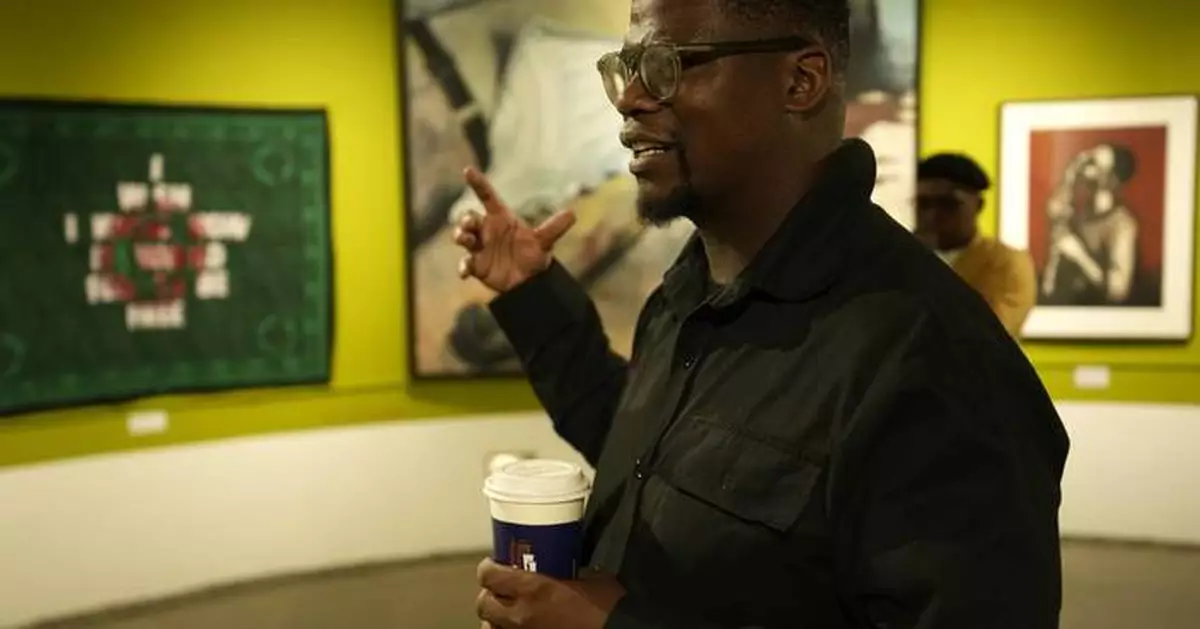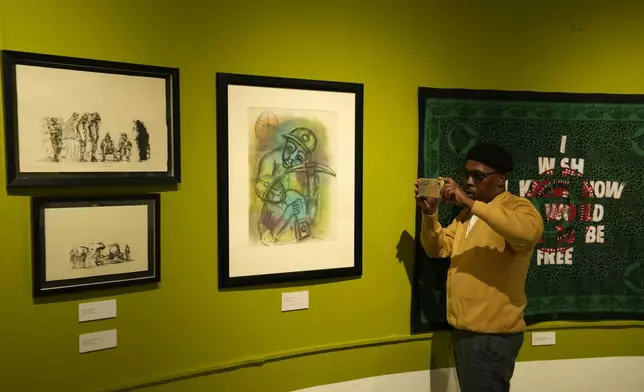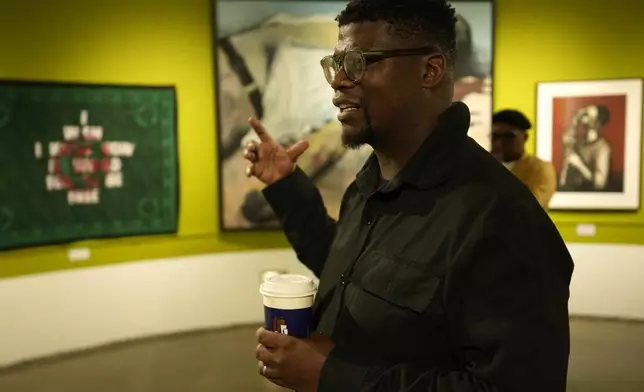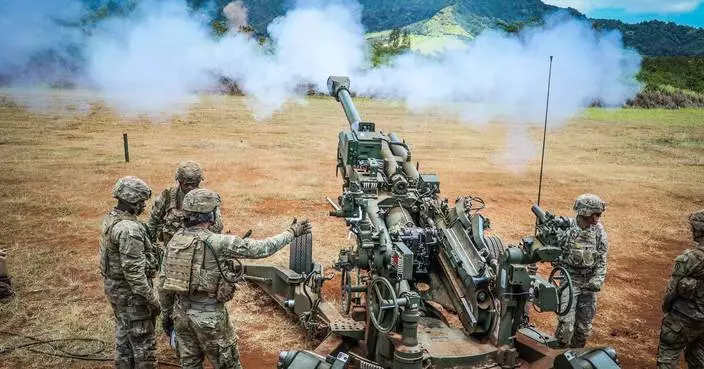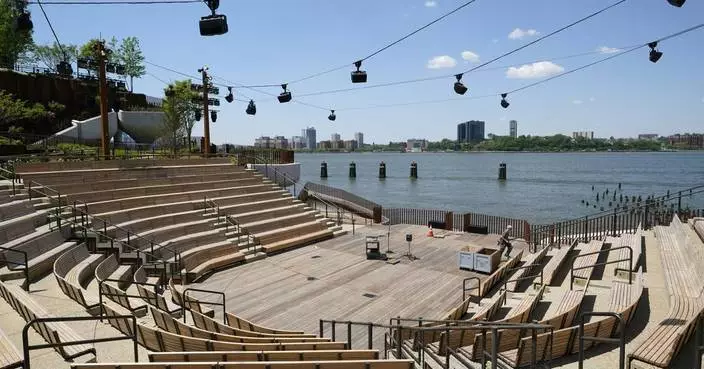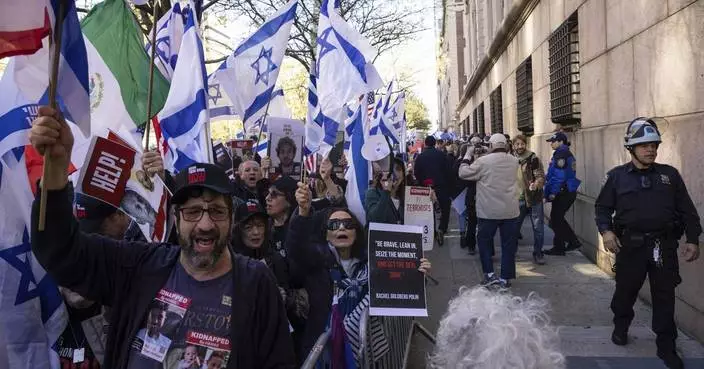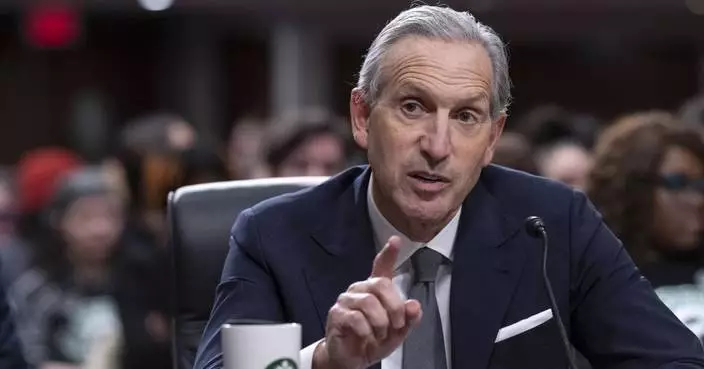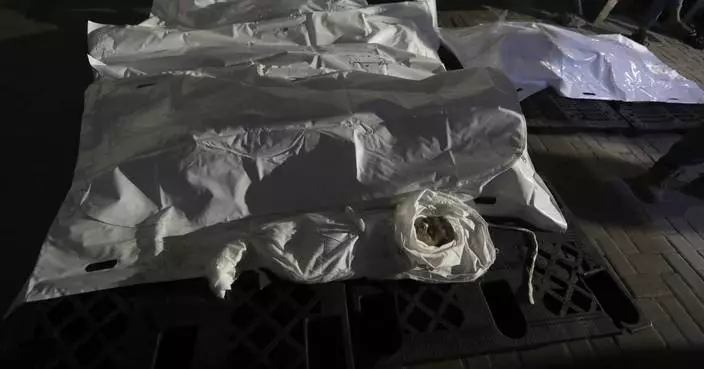JOHANNESBURG (AP) — A selection of South African artworks produced during the country’s apartheid era which ended up in foreign art collections is on display in Johannesburg to mark 30 years since the country's transition to democracy in 1994.
Most of the artworks were taken out of the country by foreign tourists and diplomats who had viewed them at the Australian Embassy in the capital, Pretoria. The embassy had opened its doors to Black artists from the townships to be recognized and have their artworks on full display to the public.
Click to Gallery
JOHANNESBURG (AP) — A selection of South African artworks produced during the country’s apartheid era which ended up in foreign art collections is on display in Johannesburg to mark 30 years since the country's transition to democracy in 1994.
An work by artist Lawrence Lemaoana at an exhibition at the Apartheid Museum in Johannesburg, South Africa, Wednesday, April 24, 2024. A selection of artworks which were produced during the country's apartheid era and ended up in foreign art collections are on display to mark 30 years since the country's transition to democracy in 1994. (AP Photo/Themba Hadebe)
Visitors view an art exhibition at the Apartheid Museum in Johannesburg, South Africa, Wednesday, April 24, 2024. A selection of artworks which were produced during the country's apartheid era and ended up in foreign art collections are on display to mark 30 years since the country's transition to democracy in 1994. (AP Photo/Themba Hadebe)
Artist Michael Selekane takes a photograph of his work at an exhibition at the Apartheid Museum in Johannesburg, South Africa, Wednesday, April 24, 2024. A selection of artworks which were produced during the country's apartheid era and ended up in foreign art collections are on display to mark 30 years since the country's transition to democracy in 1994. (AP Photo/Themba Hadebe)
Artist Lawrence Lemaoana at an exhibition at the Apartheid Museum in Johannesburg, South Africa, Wednesday, April 24, 2024. A selection of artworks which were produced during the country's apartheid era and ended up in foreign art collections are on display to mark 30 years since the country's transition to democracy in 1994. (AP Photo/Themba Hadebe)
The artworks, which reflect the daily struggles of the country’s Black majority during the apartheid era and the effects of racial segregation policies, are on display alongside works by some of South Africa’s exciting contemporary artists.
The exhibition creates a blend of perspectives on South Africa through the eyes of artists who lived during and after the country's most difficult period.
It is a culmination of efforts to repatriate African artworks, artifacts and valuable cultural items to Africa by organizations such as the Ifa Lethu Foundation, which is hosting the exhibition.
The organization has repatriated more than 700 pieces, including works by South African artist Gerard Sekoto, who died in Paris in 1993.
Similar efforts have been made across Africa, including in Benin and Nigeria.
Some of the highlights of the exhibit are an undated piece titled “For the Children” by renowned South African artist and sculptor Dumile Feni, who died in New York in 1991 before he could return to South Africa to witness the end of apartheid.
A 1987 piece titled “Mineworkers” by South African artist Mike Khali which addresses the plight of migrant workers in South African gold mines is also part of the exhibition, which is being held at the Apartheid Museum in Johannesburg.
Michael Selekane, a contemporary artist whose work is part of the exhibition, pointed out some of the technical hurdles faced by artists who came before him.
“The use of material was limited for them. That is why most of their work is black and white, and it is prints. Painting was an expensive medium to work on, their conditions were tough,” he said.
Selekane's “Rosy Future” and “Shattered” are part of the exhibition.
“We need to reflect on the fact that we did not just magically emerge as artists, there were people who laid the way forward regardless of whether their context was difficult, complicated, undoable, they were resilient in what they were doing,” said Lawrence Lemaoana, a contemporary artist whose work is also on show.
“In this period, art by black artists was not considered worth including in South African museums, galleries or corporate or private collections,” notes exhibition curator Carol Brown.
“With the exception of a few outliers — including workshops such as Polly Street in Johannesburg and the Evangelical Lutheran Centre at Rorke’s Drift, established by foreign missionaries in the former province of Natal — art education for black artists was minimal."
“For much of their lives, art materials, books and exhibitions were denied to them,” Brown writes in her curator’s statement.
The works have been grouped thematically, she says: Suffering and Conflict, Dreams of the Future, Leisure and Culture, City of Gold, Whose Land Is It? and The Beginning.
“These themes invite contemplation of the socio-political landscape of present-day South Africa, but also allow us to see how the past influences and shapes the present — and how contemporary visions can highlight the modernity in the overlooked and undervalued art produced under the terrible constraints of apartheid,” she said.
The exhibition runs until July 31.
AP Africa news: https://apnews.com/hub/africa
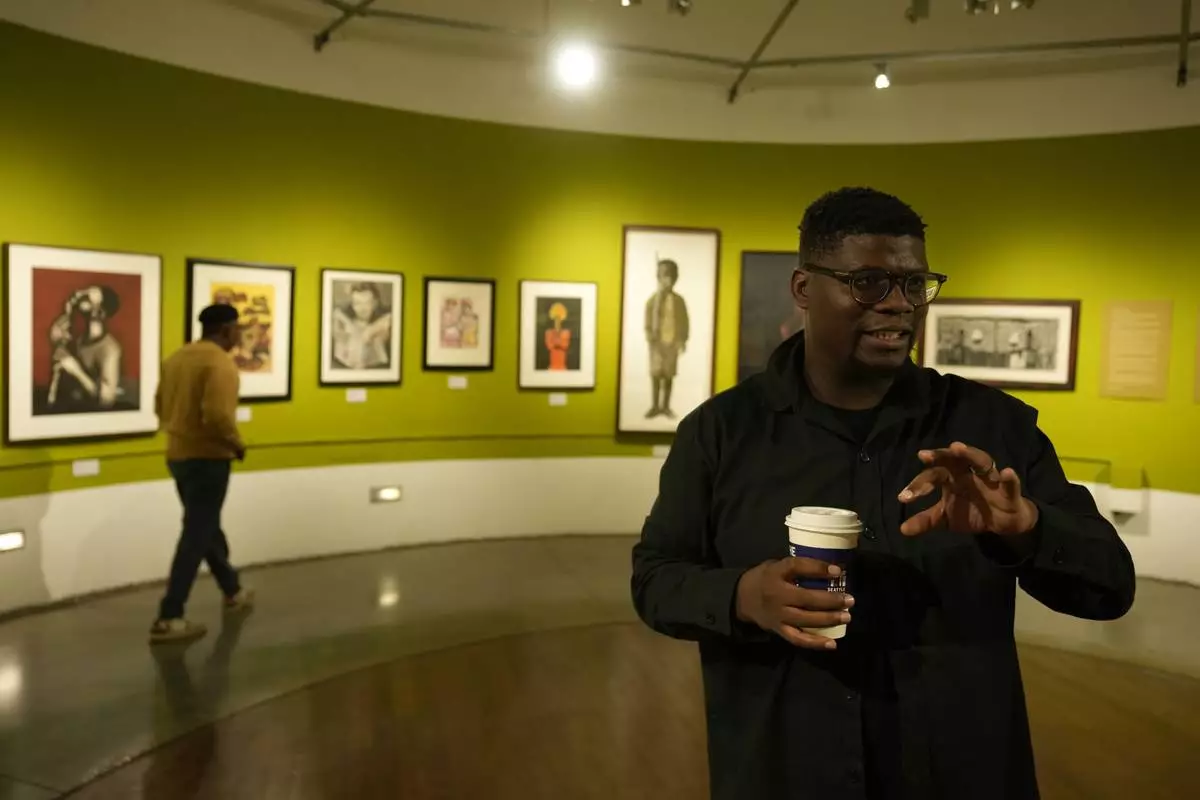
Artist Lawrence Lemaoana at an exhibition at the Apartheid Museum in Johannesburg, South Africa, Wednesday, April 24, 2024. A selection of artworks which were produced during the country's apartheid era and ended up in foreign art collections are on display to mark 30 years since the country's transition to democracy in 1994. (AP Photo/Themba Hadebe)
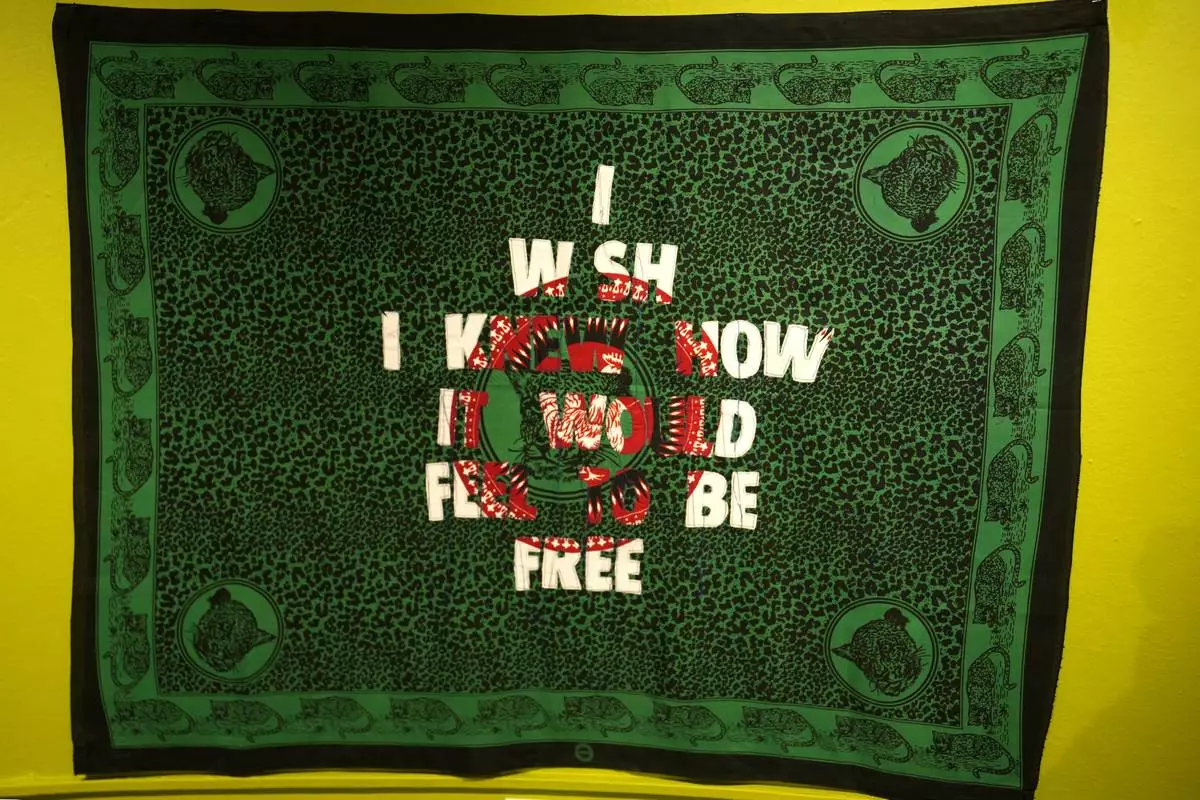
An work by artist Lawrence Lemaoana at an exhibition at the Apartheid Museum in Johannesburg, South Africa, Wednesday, April 24, 2024. A selection of artworks which were produced during the country's apartheid era and ended up in foreign art collections are on display to mark 30 years since the country's transition to democracy in 1994. (AP Photo/Themba Hadebe)
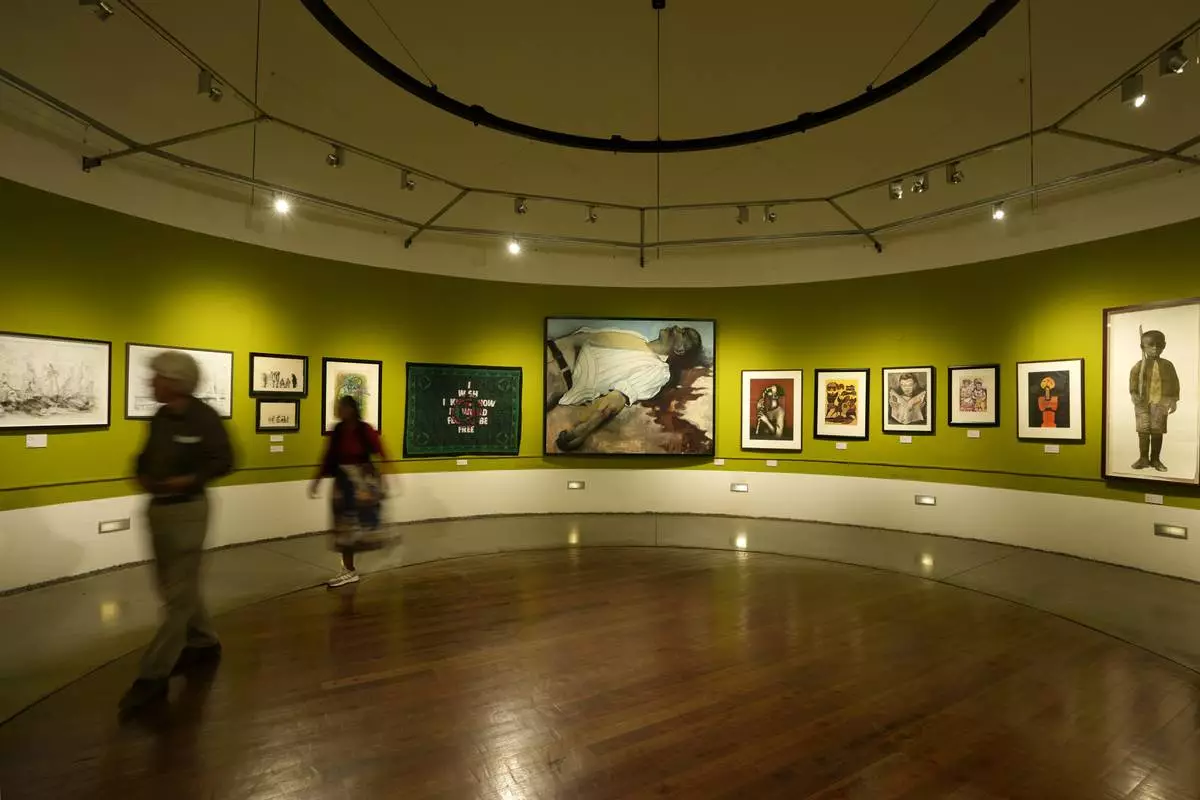
Visitors view an art exhibition at the Apartheid Museum in Johannesburg, South Africa, Wednesday, April 24, 2024. A selection of artworks which were produced during the country's apartheid era and ended up in foreign art collections are on display to mark 30 years since the country's transition to democracy in 1994. (AP Photo/Themba Hadebe)

Artist Michael Selekane takes a photograph of his work at an exhibition at the Apartheid Museum in Johannesburg, South Africa, Wednesday, April 24, 2024. A selection of artworks which were produced during the country's apartheid era and ended up in foreign art collections are on display to mark 30 years since the country's transition to democracy in 1994. (AP Photo/Themba Hadebe)

Artist Lawrence Lemaoana at an exhibition at the Apartheid Museum in Johannesburg, South Africa, Wednesday, April 24, 2024. A selection of artworks which were produced during the country's apartheid era and ended up in foreign art collections are on display to mark 30 years since the country's transition to democracy in 1994. (AP Photo/Themba Hadebe)
JERUSALEM (AP) — Hamas announced Monday it has accepted an Egyptian-Qatari proposal for a cease-fire to halt the seven-month-long war with Israel in Gaza, hours after Israel ordered about 100,000 Palestinians to begin evacuating from the southern city of Rafah, signaling that a long-promised ground invasion there could be imminent.
There was no immediate comment from Israel on the deal, and details of the proposal have not yet been released. In recent days, Egyptian and Hamas officials have said the cease-fire would take place in a series of stages during which Hamas would release hostages it is holding in exchange for Israeli troop pullbacks from Gaza.
It is not clear whether the deal will meet Hamas’ key demand of bringing about an end to the war and complete Israeli withdrawal.
Hamas said in a statement its top leader, Ismail Haniyeh, had delivered the news in a phone call with Qatar’s prime minister and Egypt’s intelligence minister. After the release of the statement, Palestinians erupted in cheers in the sprawling tent camps around Rafah, hoping the deal meant an Israeli attack had been averted.
Israel’s closest allies, including the United States, have repeatedly said that Israel shouldn't attack Rafah. The looming operation has raised global alarm over the fate of around 1.4 million Palestinians sheltering there.
Aid agencies have warned that an offensive will worsen Gaza's humanitarian catastrophe and bring a surge of more civilian deaths in an Israeli campaign that in nearly seven months has killed 34,000 people and devastated the territory.
U.S. President Joe Biden spoke Monday with Israeli Prime Minister Benjamin Netanyahu and reiterated U.S. concerns about an invasion of Rafah. Biden said that a cease-fire with Hamas is the best way to protect the lives of Israeli hostages held in Gaza, a National Security Council spokesperson said on condition of anonymity to discuss the call before an official White House statement was released.
Hamas and key mediator Qatar said that invading Rafah will derail efforts by international mediators to broker a cease-fire. Days earlier, Hamas had been discussing a U.S.-backed proposal that reportedly raised the possibility of an end to the war and a pullout of Israeli troops in return for the release of all hostages held by the group. Israeli officials have rejected that trade-off, vowing to continue their campaign until Hamas is destroyed.
Netanyahu said Monday that seizing Rafah, which Israel says is the last significant Hamas stronghold in Gaza, was vital to ensuring the militants can't rebuild their military capabilities and repeat the Oct. 7 attack on Israel that triggered the war.
Lt. Col. Nadav Shoshani, an army spokesman, said about 100,000 people were being ordered to move from parts of Rafah to a nearby Israel-declared humanitarian zone called Muwasi, a makeshift camp on the coast. He said that Israel has expanded the size of the zone and that it included tents, food, water and field hospitals.
It wasn't immediately clear, however, if that material was already in place to accommodate the new arrivals.
Around 450,000 displaced Palestinians already are sheltering in Muwasi. The U.N. agency for Palestinian refugees, known as UNRWA, said it has been providing them with aid. But conditions are squalid, with few bathrooms or sanitation facilities in the largely rural area, forcing families to dig private latrines.
After the evacuation order announcement Monday, Palestinians in Rafah wrestled with having to uproot their extended families once again for an unknown fate, exhausted after months living in sprawling tent camps or crammed into schools or other shelters in and around the city. Few who spoke to The Associated Press wanted to risk staying.
Mohammed Jindiyah said that at the beginning of the war, he had tried to hold out in his home in northern Gaza after Israel ordered an evacuation there in October. He ended up suffering through heavy bombardment before fleeing to Rafah.
He’s complying with the order this time, but was unsure now whether to move to Muwasi or another town in central Gaza.
“We are 12 families, and we don’t know where to go. There is no safe area in Gaza,” he said.
Sahar Abu Nahel, who fled to Rafah with 20 family members including her children and grandchildren, wiped tears from her cheeks, despairing at a new move.
“I have no money or anything. I am seriously tired, as are the children,” she said. “Maybe it’s more honorable for us to die. We are being humiliated.”
Israeli military leaflets were dropped with maps detailing a number of eastern neighborhoods of Rafah to evacuate, warning that an attack was imminent and anyone who stays “puts themselves and their family members in danger.” Text messages and radio broadcasts repeated the message.
UNRWA won't evacuate from Rafah so it can continue to provide aid to those who stay behind, said Scott Anderson, the agency's director in Gaza.
“We will provide aid to people wherever they choose to be,” he told the AP.
The U.N. says an attack on Rafah could disrupt the distribution of aid keeping Palestinians alive across Gaza. The Rafah crossing into Egypt, a main entry point for aid to Gaza, lies in the evacuation zone. The crossing remained open Monday after the Israeli order.
Jan Egeland, secretary-general of the Norwegian Refugee Council, condemned the “forced, unlawful” evacuation order and the idea that people should go to Muwasi.
“The area is already overstretched and devoid of vital services,” Egeland said. He said that an Israeli assault could lead to “the deadliest phase of this war.”
Israel’s bombardment and ground offensives in Gaza have killed more than 34,700 Palestinians, around two-thirds of them children and women, according to Gaza health officials. The tally doesn't distinguish between civilians and combatants. More than 80% of the population of 2.3 million have been driven from their homes, and hundreds of thousands in the north are on the brink of famine, according to the U.N.
Tensions escalated Sunday when Hamas fired rockets at Israeli troops positioned on the border with Gaza near Israel’s main crossing for delivering humanitarian aid, killing four soldiers. Israel shuttered the crossing — but Shoshani said it wouldn't affect how much aid enters Gaza as others are working.
Meanwhile, Israeli airstrikes on Rafah killed 22 people, including children and two infants, according to a hospital.
The war was sparked by the unprecedented Oct. 7 raid into southern Israel in which Hamas and other militants killed around 1,200 people, mostly civilians, and abducted around 250 hostages. After exchanges during a November cease-fire, Hamas is believed to still hold about 100 Israelis captive as well the bodies of around 30 others.
The mediators over the cease-fire — the United States, Egypt and Qatar — had appeared to scramble to salvage a cease-fire deal they had been trying to push through the past week. Egypt said it was in touch with all sides Monday to “prevent the situation from … getting out of control.”
CIA Director William Burns, who had been in Cairo for talks on the deal, headed to meet the prime minister of Qatar, an official familiar with the matter said. It wasn't clear whether a subsequent trip to Israel that had been planned would happen. The official spoke on condition of anonymity to discuss the closed-door negotiations.
In a fiery speech Sunday evening marking Israel's Holocaust memorial day, Netanyahu rejected international pressure to halt the war, saying that “if Israel is forced to stand alone, Israel will stand alone.”
On Monday, Netanyahu accused Hamas of “torpedoing” a deal by not budging from its demand for an end to the war and a complete Israeli troop withdrawal in return for the hostages’ release, which he called “extreme.”
Mroue reported from Beirut. Samy Magdy in Cairo and Zeke Miller in Washington contributed.

This satellite image taken by Planet Labs PBC shows Rafah in the Gaza Strip, center, Saturday, May 4, 2024. The Israeli army ordered some 100,000 Palestinians on Monday, May 6, 2024, to begin evacuating from the southern city of Rafah in Gaza, signaling that a long-promised ground invasion there could be imminent and further complicating efforts to broker a cease-fire. In the image, Egypt can be seen to the left, Israel to the bottom right corner. (Planet Labs PBC via AP)
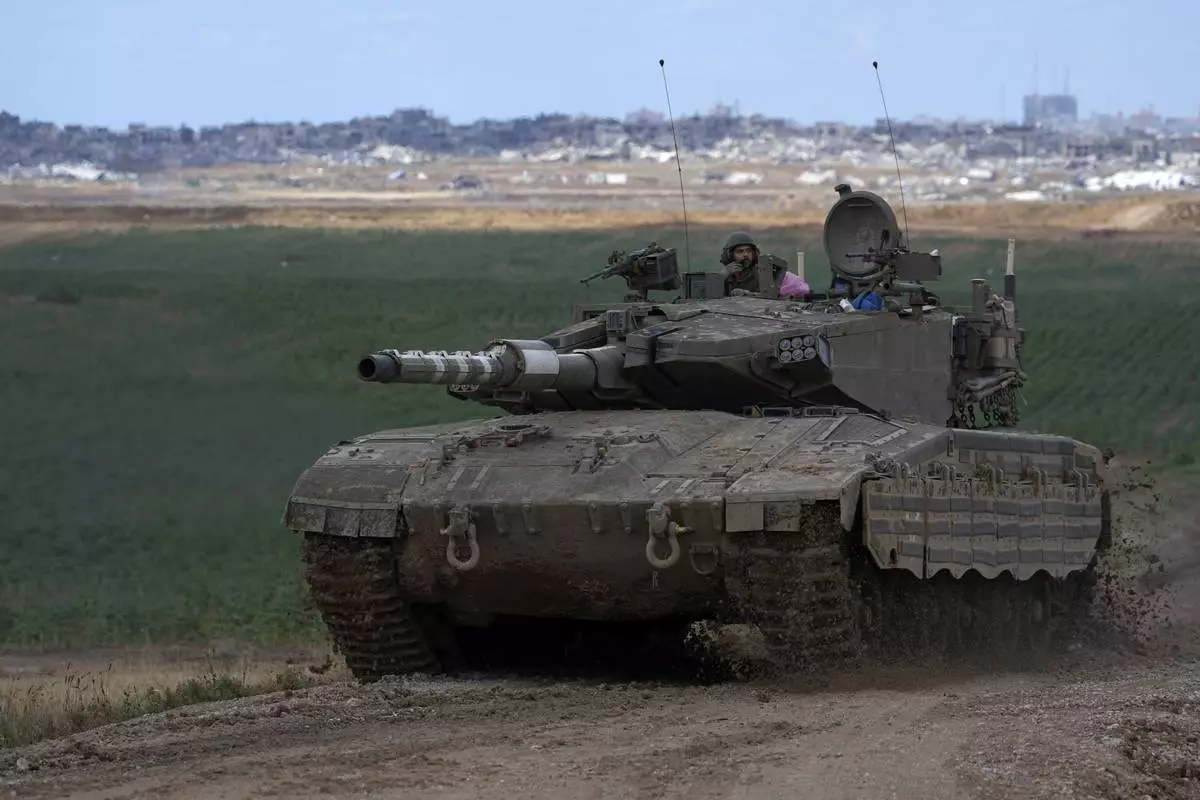
An Israeli Defense Forces tank drives away from the Gaza Strip, as seen from southern Israel, Monday, May 6, 2024. (AP Photo/Tsafrir Abayov)
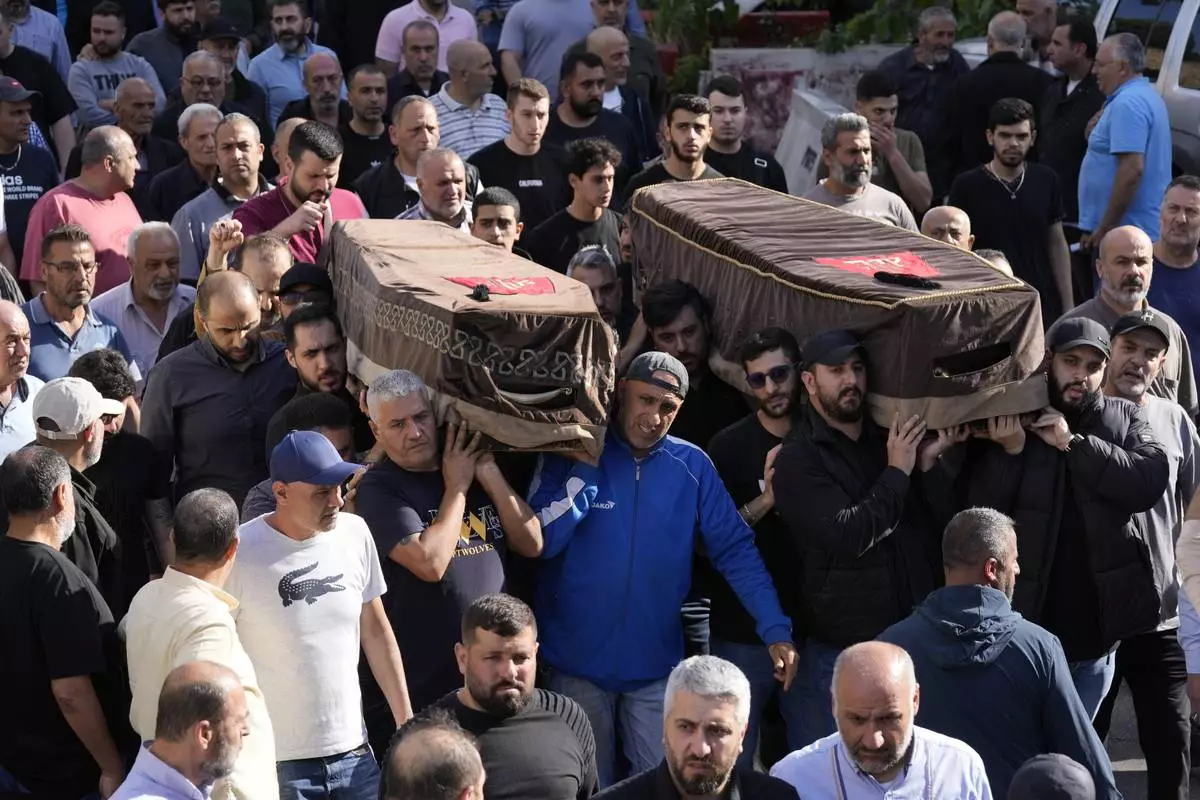
Mourners carry the coffins of two victims who were among four civilians from the same family that killed on Sunday by Israeli strikes on the southern town of Mays al-Jabal, during their funeral procession, in Beirut, Monday, May 6, 2024. Hezbollah militants and Israeli forces have been exchanging fire in south Lebanon since a day after the Israel-Hamas war began on Oct. 7. (AP Photo/Hussein Malla)
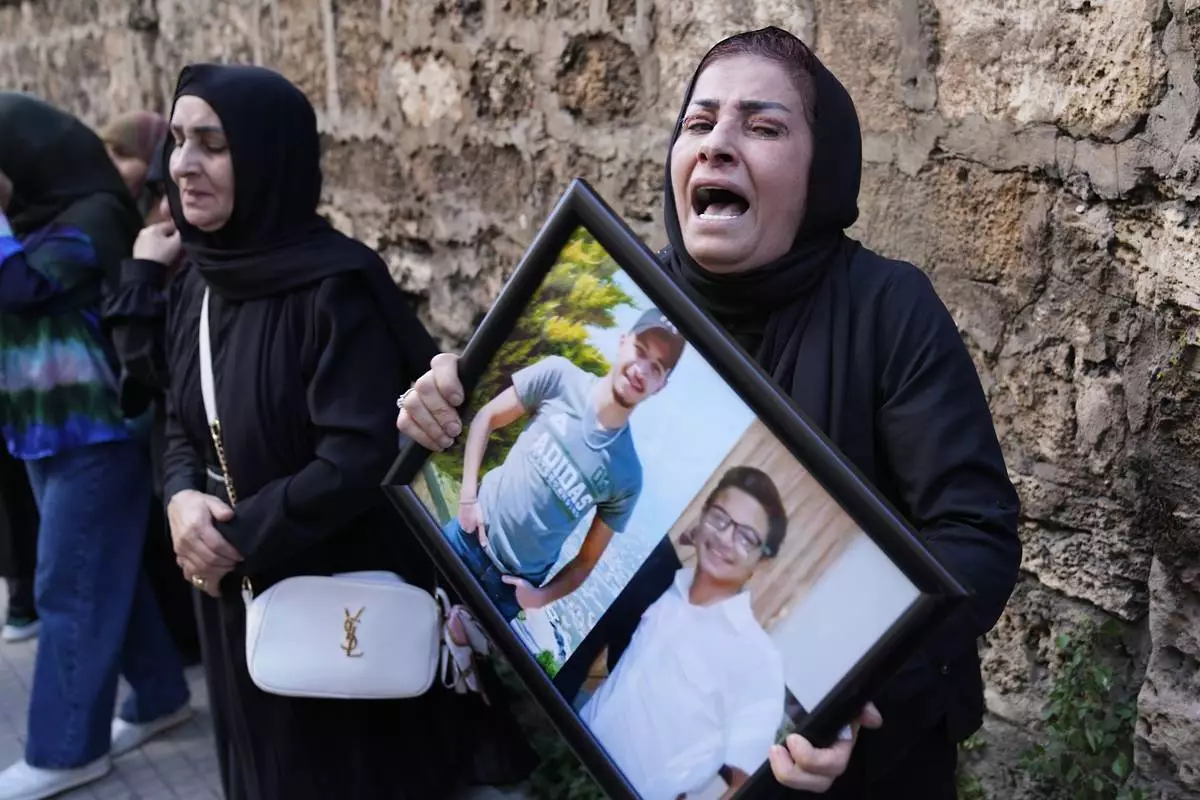
A Lebanese woman mourns, as she holds a frame with the portraits of two victims who were among four civilians from the same family that killed on Sunday by Israeli strikes on the southern town of Mays al-Jabal, during their funeral procession, in Beirut, Monday, May 6, 2024. Hezbollah militants and Israeli forces have been exchanging fire in south Lebanon since a day after the Israel-Hamas war began on Oct. 7. (AP Photo/Hussein Malla)
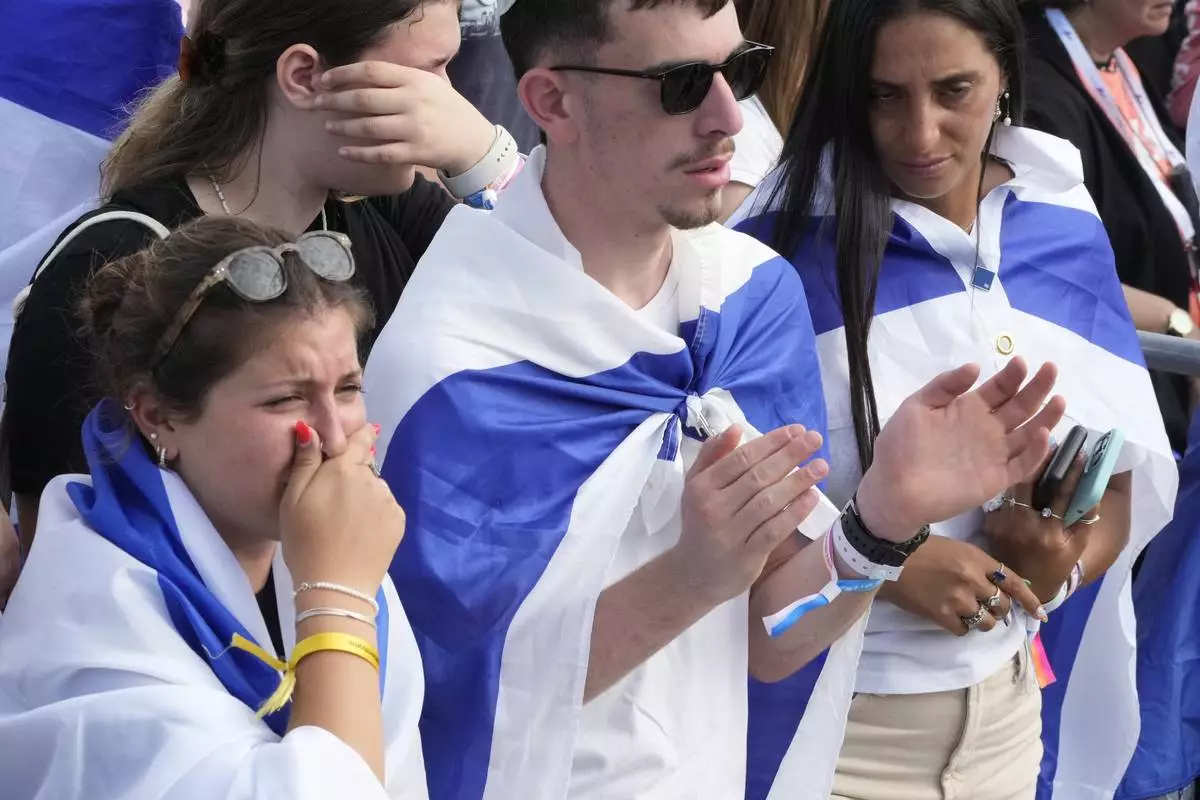
People attend a ceremony at the former Nazi German death camp of Auschwitz-Birkenau during the annual Holocaust remembrance event, the "March of the Living" in memory of the six million Holocaust victims in Oswiecim, Poland, Monday, May 6, 2024. The event comes amid the dramatic backdrop of the violence of the Israel-Hamas war after the Oct. 7 Hamas attack, the deadliest violence against Jews since the Holocaust, and as pro-Palestinian protests sweep U.S. campuses. (AP Photo/Czarek Sokolowski)
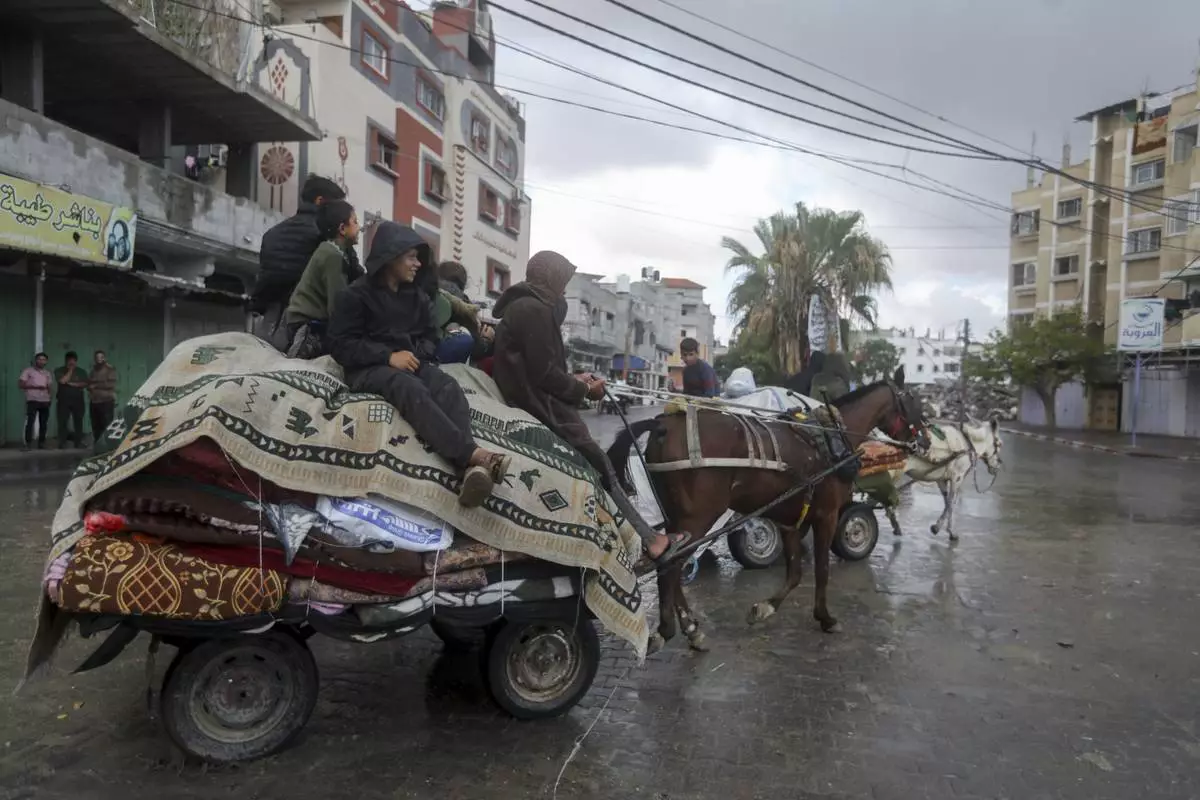
Palestinians flee from the eastern side of the southern Gaza city of Rafah after the Israeli army orders them to evacuate ahead of a military operation, in Rafah, Gaza Strip, Monday, May 6, 2024. The order affects tens of thousands of people and could signal a broader invasion of Rafah, which Israel has identified as Hamas' last major stronghold after seven months of war. (AP Photo/Ismael Abu Dayyah)

An Israeli Defense Forces tank drives away from the Gaza Strip, as seen from southern Israel, Monday, May 6, 2024. (AP Photo/Tsafrir Abayov)

Palestinians flee from the eastern side of the southern Gaza city of Rafah after the Israeli army orders them to evacuate ahead of a military operation, in Rafah, Gaza Strip, Monday, May 6, 2024. The order affects tens of thousands of people and could signal a broader invasion of Rafah, which Israel has identified as Hamas' last major stronghold after seven months of war. (AP Photo/Ismael Abu Dayyah)
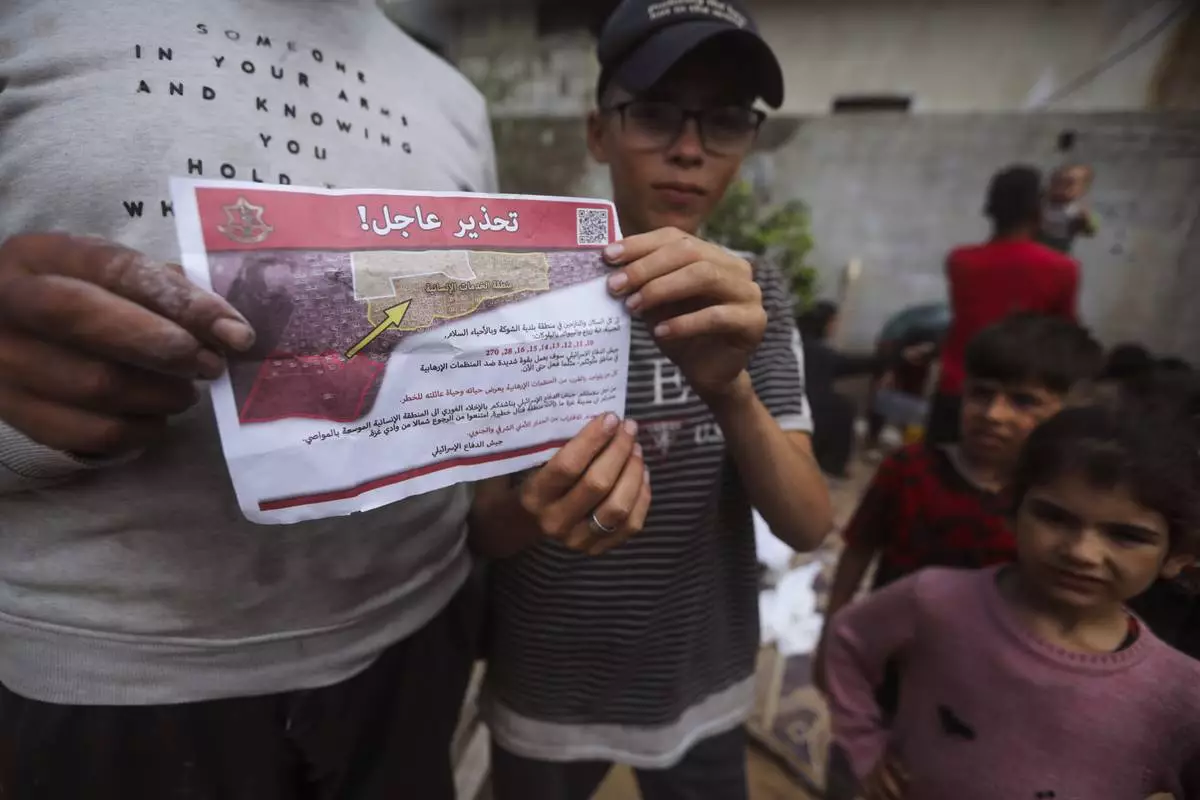
Palestinians hold leaflets dropped by Israeli planes calling on them to evacuate ahead of an Israeli military operation in Rafah, southern Gaza Strip, Monday, May 6, 2024. The order affects tens of thousands of people and could signal a broader invasion of Rafah, which Israel has identified as Hamas' last major stronghold after seven months of war. (AP Photo/Ismael Abu Dayyah)
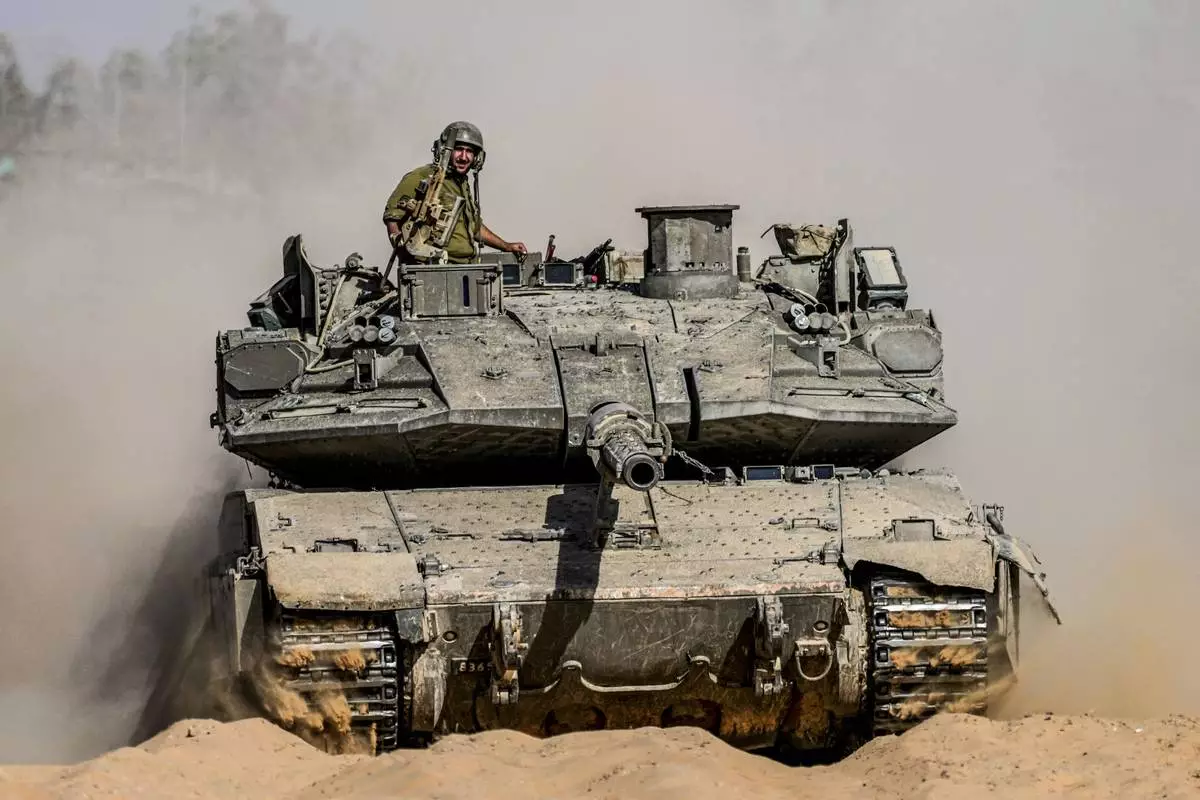
Israeli soldiers drive a tank at a staging ground near the border with the Gaza Strip, in southern Israel, Sunday, May 5, 2024. (AP Photo/Tsafrir Abayov)

Palestinians react next to the bodies of their relatives who were killed in an Israeli airstrike in Gaza Stirp, at the Al Aqsa hospital in Deir al Balah, Gaza, Sunday, May 5, 2024. (AP Photo/Abdel Kareem Hana)
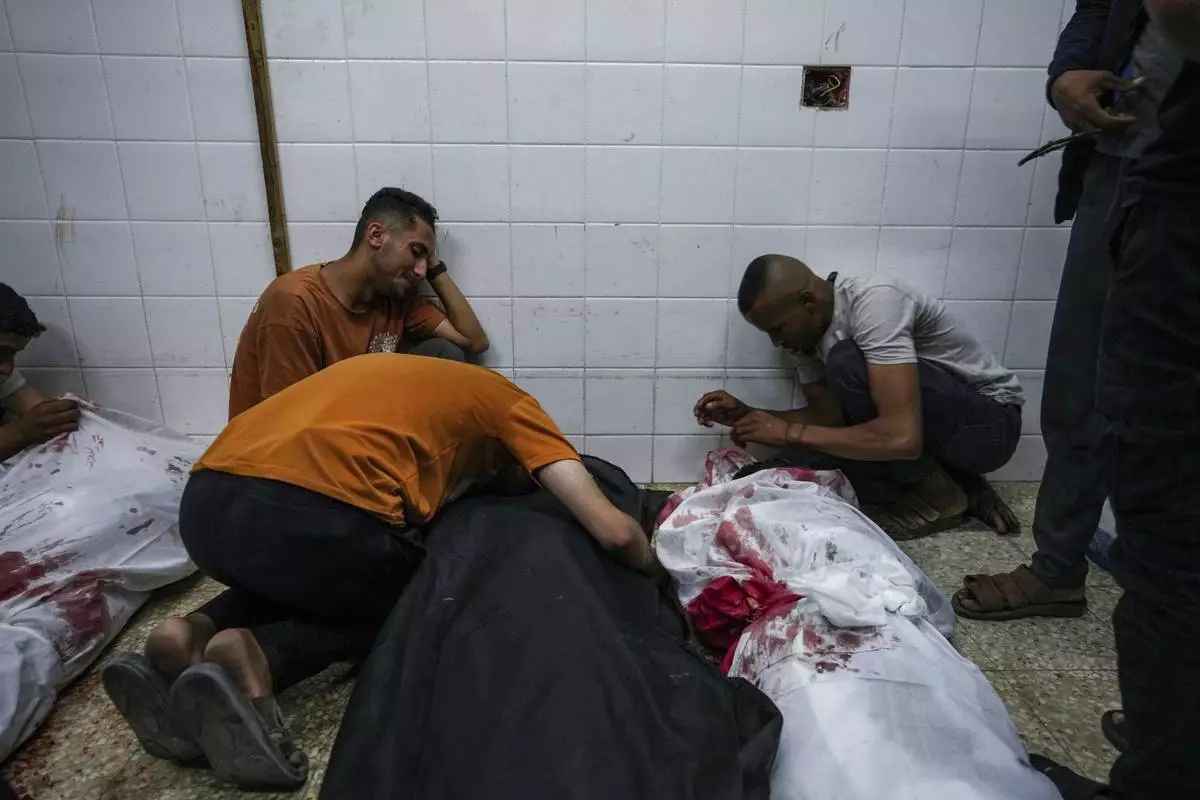
Palestinians react next to the bodies of their relatives who were killed in an Israeli airstrike in Gaza Stirp, at the Al Aqsa hospital in Deir al Balah, Gaza, Sunday, May 5, 2024. (AP Photo/Abdel Kareem Hana)

A Palestinian woman mourns her relative, 7-month old baby Hani Qeshta, who was killed in an Israeli bombardment on a residential building with Qeshta's family, at the morgue of Al Najjar hospital in Rafah, southern Gaza Strip, Sunday, May 5, 2024. (AP Photo/Ismael Abu Dayyah)
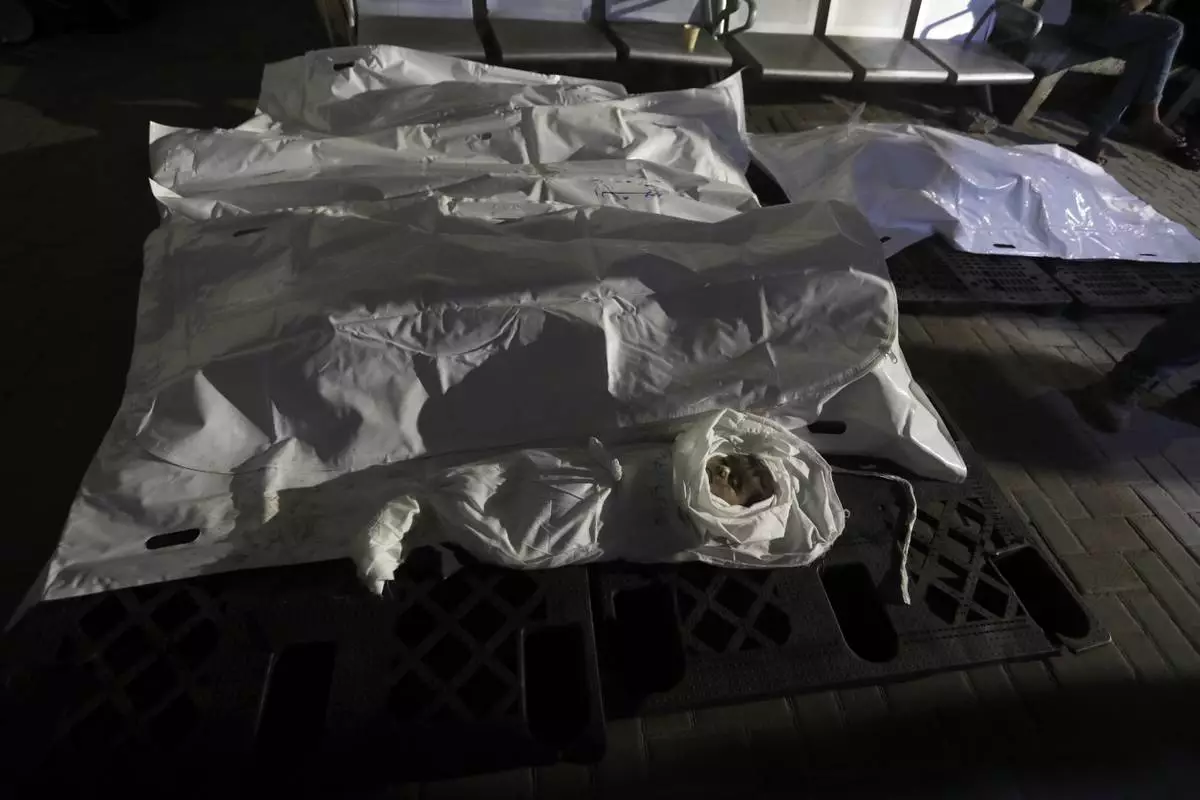
The Qeshta family is seen in body bags at the morgue of Al Najjar hospital in Rafah, southern Gaza Strip, Sunday, May 5, 2024. The family was killed in an Israeli bombardment on a residential building in Rafah. (AP Photo/Ismael Abu Dayyah)
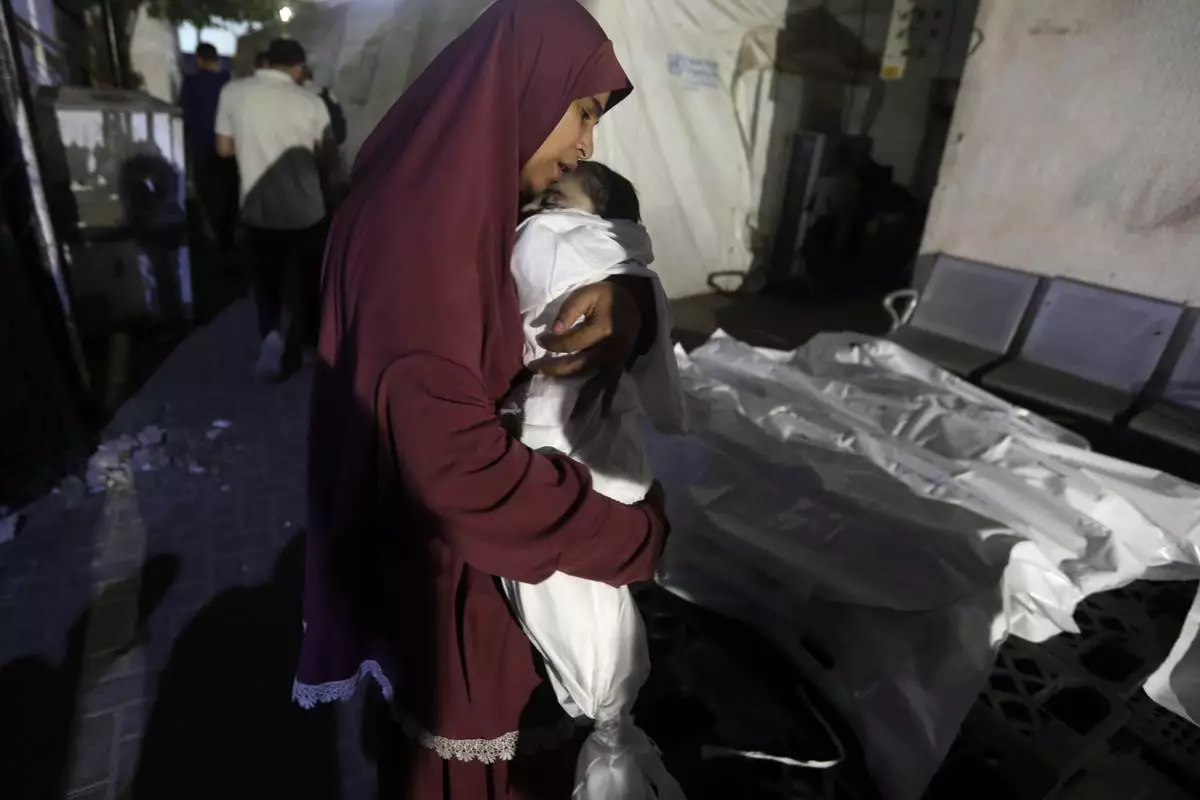
A Palestinian woman mourns her relative, 7-month old baby Hani Qeshta, who was killed in an Israeli bombardment on a residential building with Qeshta's family, at the morgue of Al Najjar hospital in Rafah, southern Gaza Strip, Sunday, May 5, 2024. (AP Photo/Ismael Abu Dayyah)







